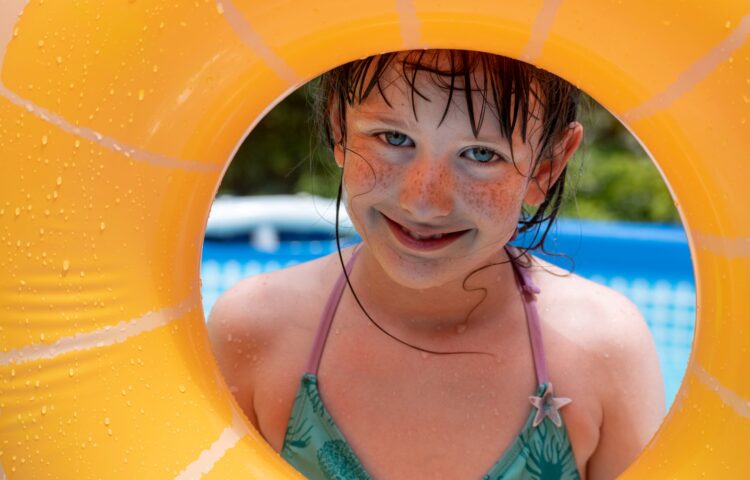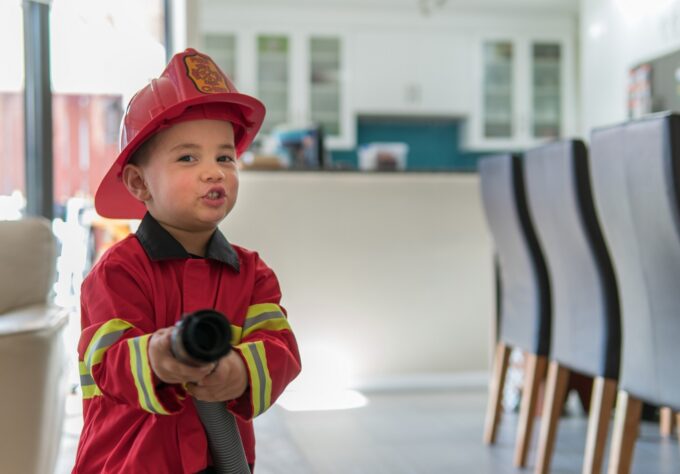Drowning is a leading cause of injury-related death in children ages one to four, according to the American Academy of Pediatrics (AAP). Safe Kids Worldwide notes that more than half of drowning deaths in children happen in those ages 0 to 4. Nearly 1,000 U.S. children under 20 years old lose their lives to drowning each year.
It’s important to know that drownings can happen quickly.
The many rules written about pool safety come down to the same important guideline: Kids should always be supervised in and around water, no matter what their swimming skill levels. Young children especially must be watched—they can drown in less than 2 inches of water. That means drowning can happen when and where you’d least expect it.
Get Them Swimming Early
According to the policy statement, “Evidence reveals that many children older than 1 year will benefit from swim lessons.” And classes taught by qualified instructors at community centers and Y’s are usually affordable and convenient.
But just because a child has had swimming lessons doesn’t mean there isn’t a risk of drowning. A properly fitted life vest for young children and weak swimmers is necessary whenever an outdoor activity involves water. And remember, inflatable vests and arm devices, like “floaties,” are not guaranteed to protect against drowning.
General Water Safety Tips
Water safety begins at home—whether you own an in-ground pool, a portable pool, a hot tub, or you belong to a local swim club. This also includes bathtubs, toilets, decorative ponds or fountains, and buckets used for cleaning inside and outside the home. Talk to your kids regularly about what to do—and not do—around water.
- Don’t allow running or pushing around the pool.
- Make sure there is no diving in areas that aren’t marked for diving.
- Never leave children unattended in a pool; and always actively watch them when they are in or near water (This means no reading, napping, texting, talking on the phone, etc.).
- Keep children away from pool drains, pipes, and other openings to avoid entrapment.
- Make sure older kids swim with a buddy—never alone.
- Keep rescue equipment by the pool—seconds count when it comes to water emergencies.
- Always have a cordless phone or your cell phone with you when you’re watching kids during water play.
- If you own a pool or spa, install the proper safety equipment. And check neighbors’ and family members’ pools for the same safety features.
- If a child is missing, check the pool or spa first.
- Teach your child to get out of the water during bad weather, especially lightning.
- Drain bath water as soon as you are finished.
- Empty any buckets that could have water, immediately when finished.
- Make sure the toilet seat is down or add a lock
- Keep bathroom doors and laundry room doors closed/locked.
- Learn CPR and update those skills regularly.
Home Pool Safety Tips
- Safe Kids recommends that a backyard pool have fences that are at least 4 feet high on all sides of the pool. A self-closing and self-latching gate with a lock that is out of a child’s reach are also recommended.
- Installing a pool alarm or cover is also a good safety precaution to consider, but these are not substitutes for fencing and adult supervision.
- When kids are finished swimming, remove all pool toys to prevent children from trying to recover them when unsupervised.
- Inflatable flotation devices like vests, water rings, rafts and tubes may give a false sense of security when in the pool. These are not effective when it comes to preventing drowning and should never be substituted for adult supervision.
- Ladders should be removed from above-ground pools when not in use.
- All water should be removed from a portable pool when it is done being used. Turn portable pools and buckets over when done. Rain can collect in them and be a drowning hazard.
- Do not use mermaid tails or fins in the pool. These kinds of toys can make it hard to swim and can lead to drowning.
Lake and Pond Safety Tips
- Do not let kids swim without adult supervision-lakes or ponds may be shallow near the bank, but increase in depth sharply farther out from shore.
- Ponds and lakes may have jagged rocks, broken glass, or trash that may not be visible.
- Make sure children wear foot protection such as aqua socks or water shoes.
- Watch out for weeds and grass that could entangle an arm and/or leg.
- Most boating accidents, particularly among teens, are related to alcohol. When you and your family are boating, assign a designated driver who won’t drink. Be sure teens know about the dangers of alcohol, on and off the water.
Beach Safety Tips
- Teach children to always swim when and where a lifeguard is on duty.
- Kids should never swim close to piers or pilings because sudden water movements may cause swimmers to hit them.
- Unlike calm waters in swimming pools, the beach has different dangers like currents and tides. Check with the lifeguard when you arrive to find out about the water conditions.
- Do not allow kids to swim in large waves or undertows. If they are caught in one, they should swim parallel to the shore or should tread water and call a lifeguard for help.
What to do in a Water Emergency
- When a child is missing and water is nearby, always check there first. Surviving a drowning depends on a quick rescue and restarting breathing as soon as possible.
- If you find a child in the water, immediately get the child out while calling out for help. If someone else is available, have them call 911.
- Check to see if the child’s airway is clear. If the child is not breathing, start CPR if you have the proper training to do so. When the emergency number is called, follow the instructions that the emergency operator gives you.
- If you believe the child may have suffered a neck injury, possibly from diving, keep the child on their back and brace the neck and shoulders with your hands and forearms to help keep the neck from moving until emergency help arrives. Keep the child still and speak in calm tones to keep the child comforted. Continue to watch for adequate breathing.
Learn More
Water Safety – Nemours KidsHealth.org


